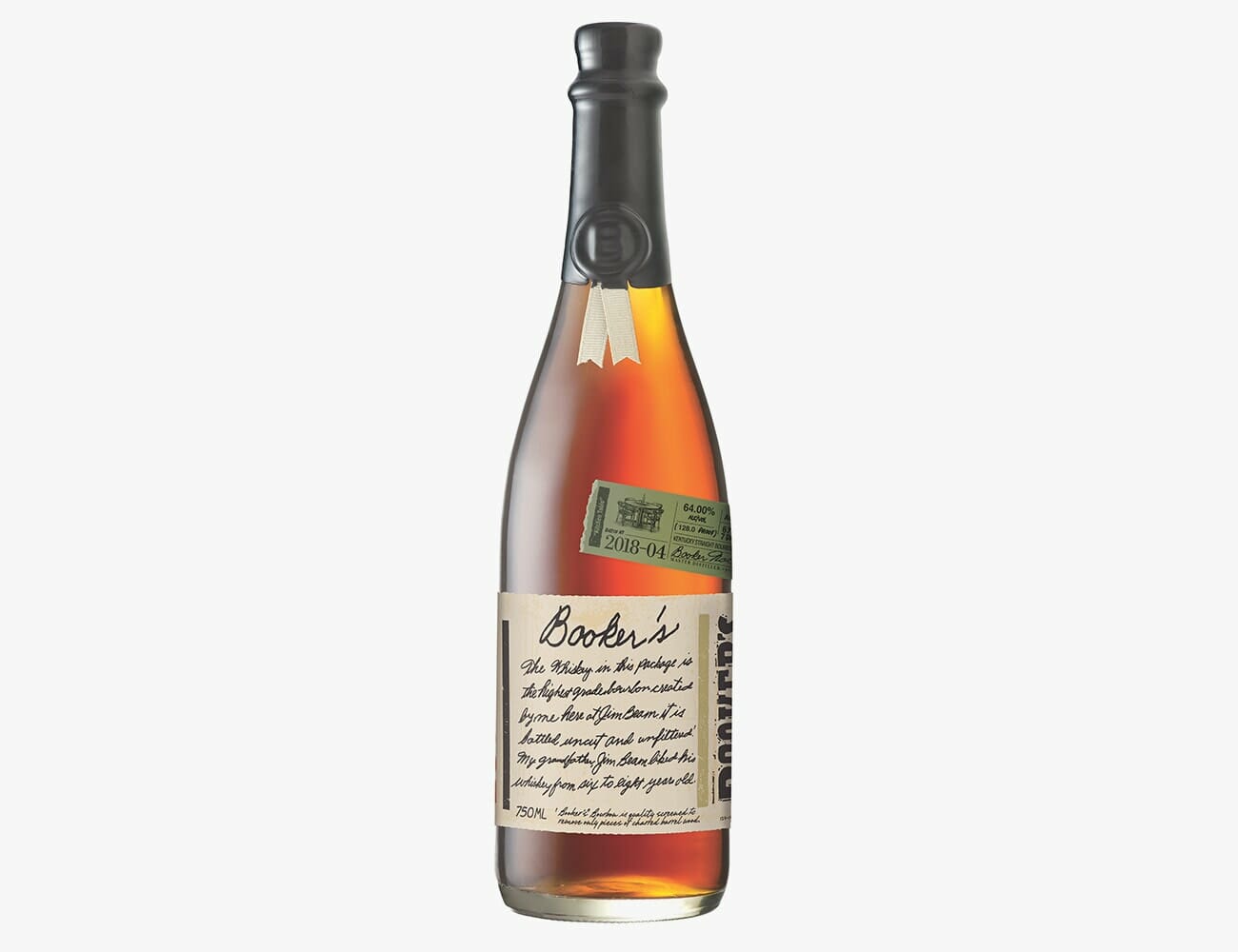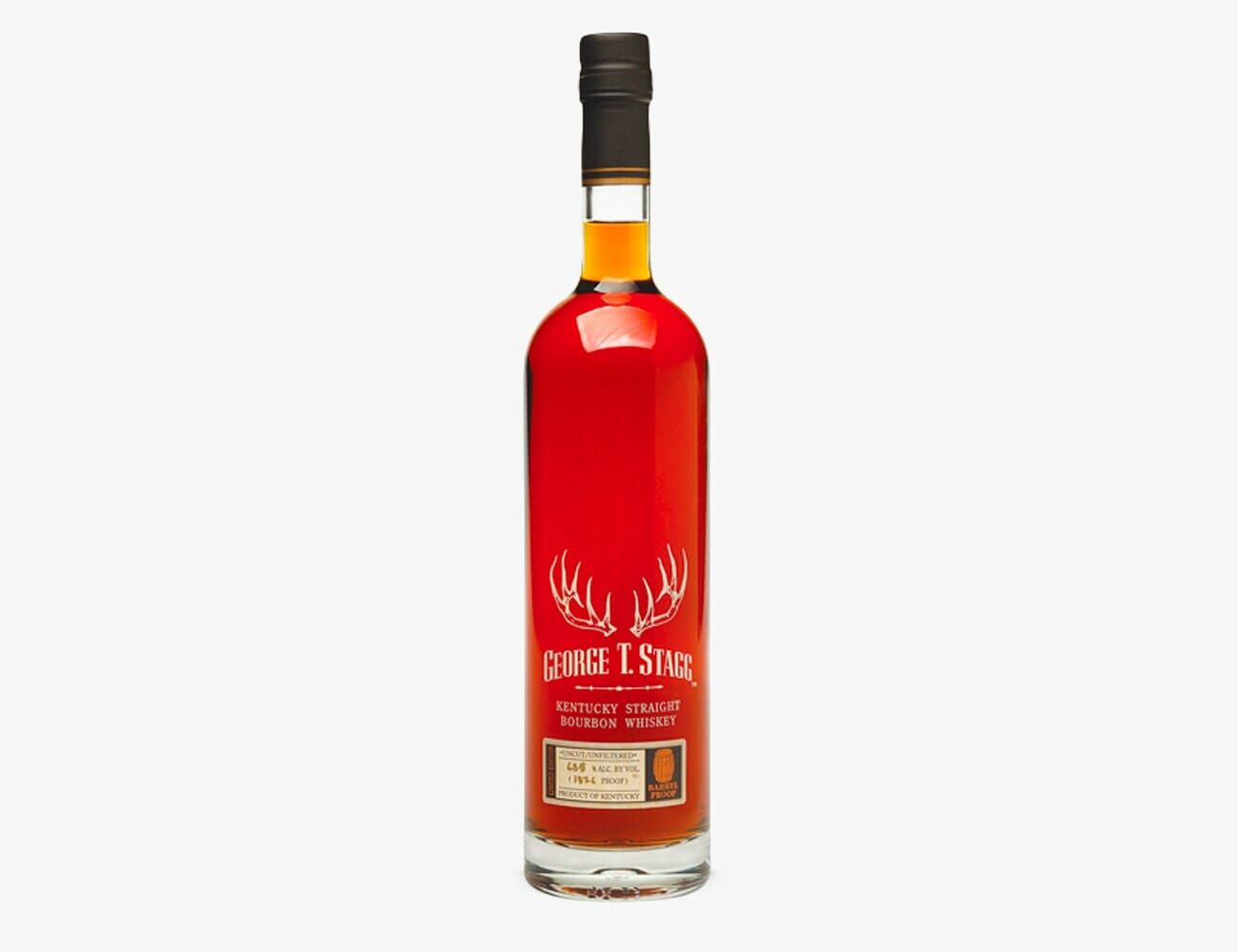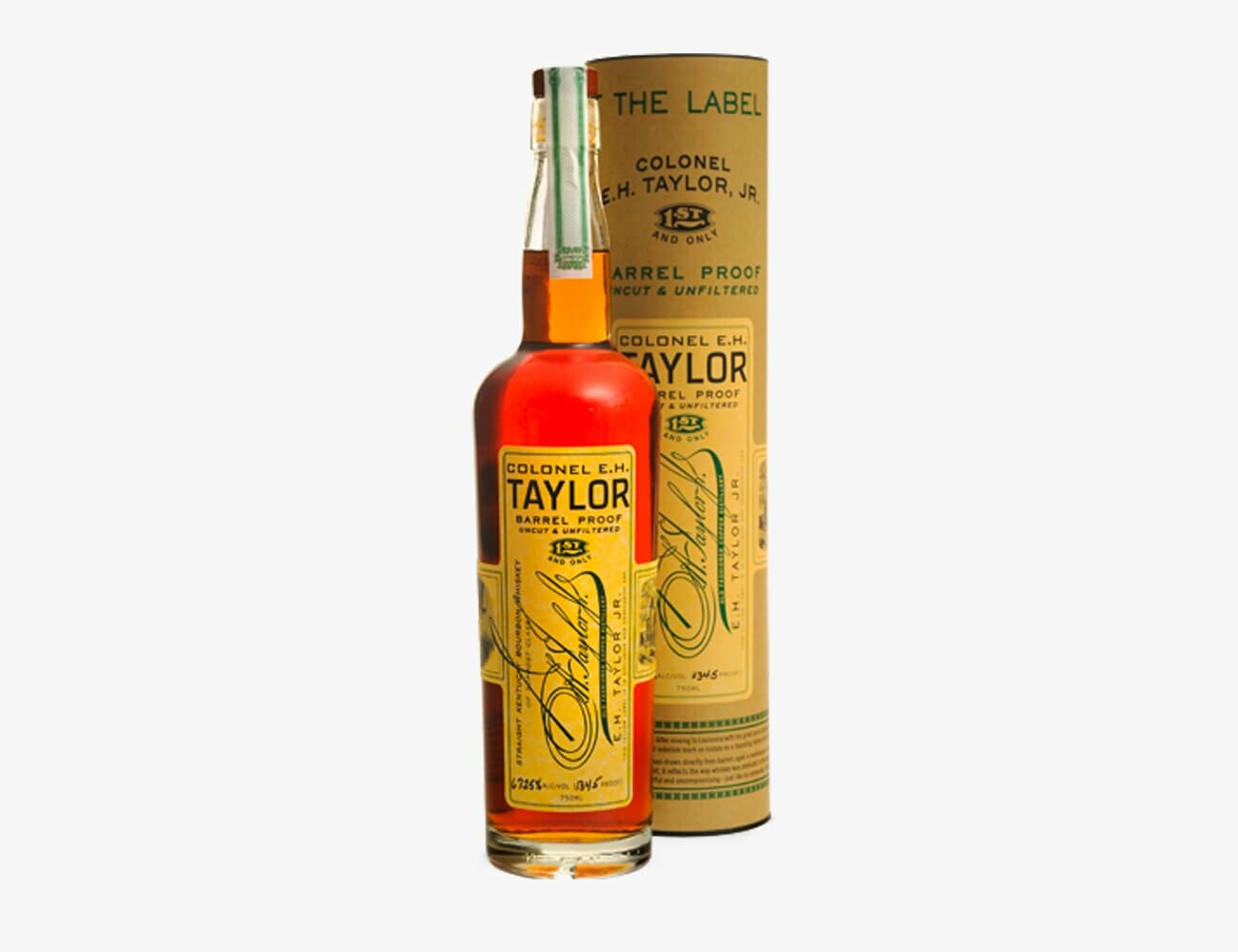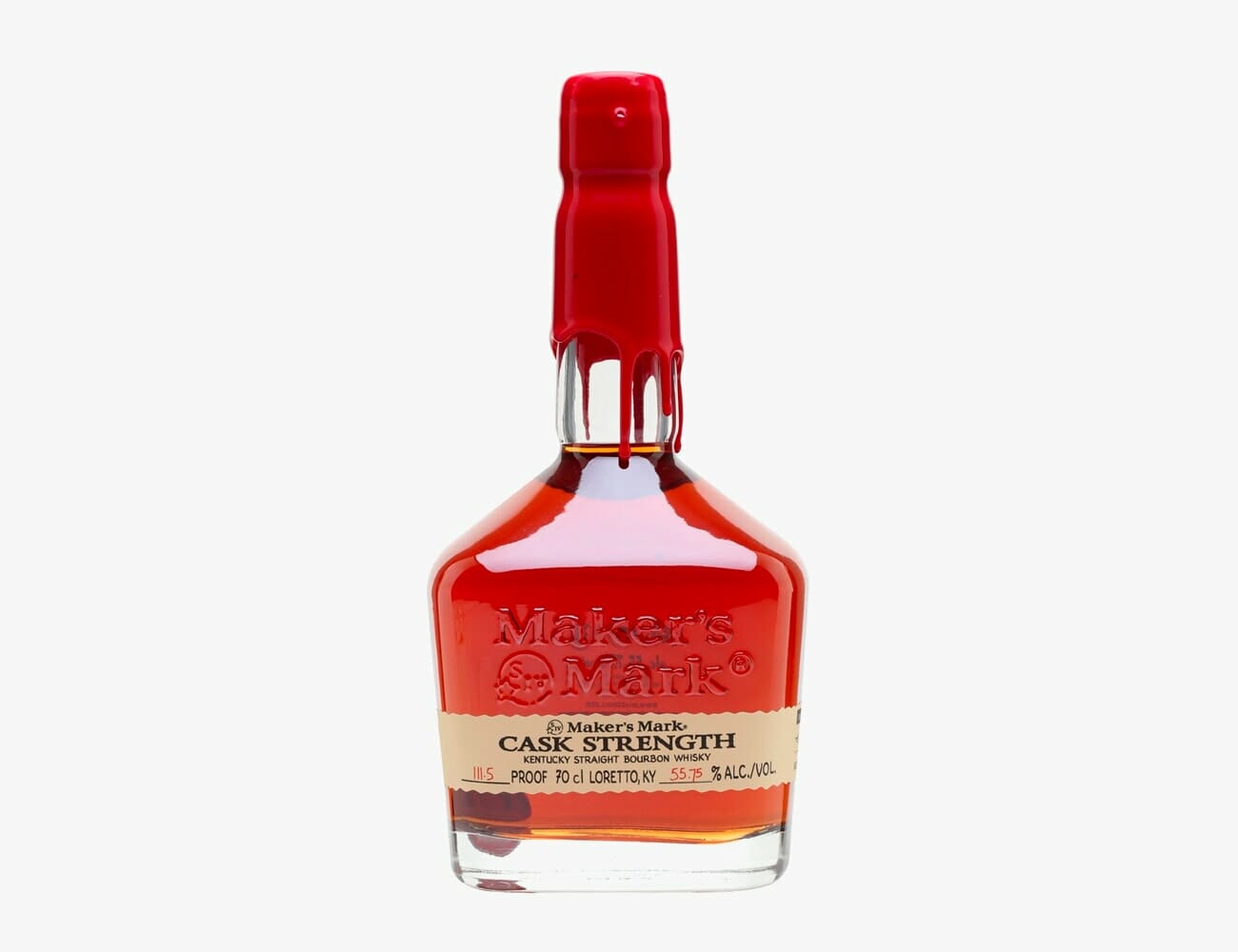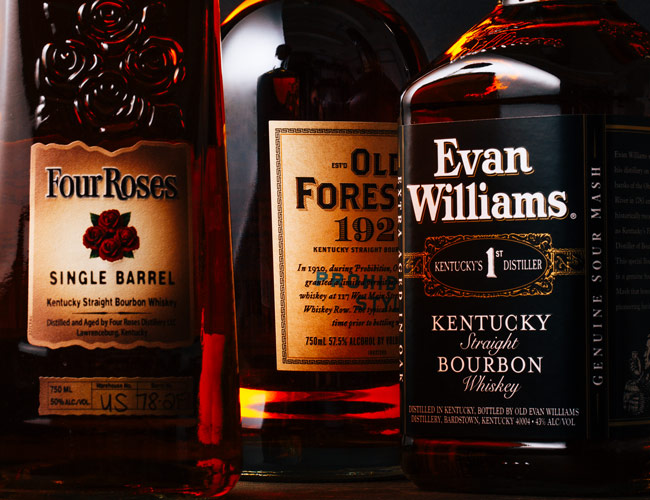A bourbon myth for you, briefly: any 120 proof bourbon is somehow inherently better than your run-of-the-mill 80- or 90-proof stuff.
“There is a falsity that’s in the consumer base that cask strength is better,” says Fred Minnick, a spirits writer and the Editor-in-Chief of Bourbon+ magazine. “What’s really happening is, a lot of people can’t taste flaws at that strength. If they were to cut it with water and get it down to 90 or 80 proof, they would detect notes they wouldn’t necessarily care for.”
Don’t go pouring the strong stuff in your liquor cabinet down the drain, though. High-proof bourbon (it’s called “cask strength” when it’s unwatered, and therefore the same strength it was when it exited the bourbon cask) remains a beautiful spirit.
Weller first bottled a bourbon at “barrel proof” in the 1940s, but it was only 107 proof. The first bottles to breach the 115 mark came from Booker Noe, at Jim Beam, and a less-remembered bourbon from Willet called Noah’s Mill. Those bourbons weren’t just about firepower. They gave drinkers a chance to taste the bourbons like their blenders had, straight out of the barrel; they added a new tool to the bartender’s cocktail kit; and they introduced a new route — albeit a difficult one for distillers and blenders to traverse — to flavors intensified by the higher alcohol content.
Science backs this up. Ethanol, the alcohol in spirits, is an immense flavor enhancer, but its effects on the taste of a drink are not always straightforward. For instance, scientific studies have found that an increase in ethanol content in a spirit tends to decrease the release of aromatic compounds — higher alcohol, less smells. To a point, a well-balanced high-proof bourbon can amplify certain flavors, like caramel, Minnick says. When distillers control the beast, “you get those special bourbons, where the concentration of the flavor notes are much more powerful.”
It’s a fine line to walk for distillers, let alone buyers. The final lesson? Don’t buy high-proof bourbon for high proof’s sake, but prospect carefully and you’ll unlock liquid pleasures beyond the vale. Here are some high-proof bourbons that walk the line beautifully.
Booker’s 2018 04 “Kitchen Table”
The OG: Booker Noe was a visionary in the high-proof world, one of the first to bottle bourbon at cask strength, unwatered. (Booker’s also claims that he coined the term “small batch” when, really, he popularized it.) That bourbon was called “Booker’s True Barrel Bourbon.” Today, every bottle of Booker’s is bottled at barrel proof, and they pack a serious punch — usually, upward of 125 proof.
Proof: 128 (barrel proof)
Age: 6 years, 8 months, 7 days
Tasting Notes: honey, rye, molasses, spice
Knob Creek Single Barrel Reserve
Juicy Bomb: Also the doing of Booker Noe, Knob Creek comes from the Beam Suntory distillery. It’s aged nine years, just like every other Knob Creek bourbon, which drinkers will find reflected in its classic vanilla and caramel notes. The extra ethanol seems to amplify the sultry caramel flavor without overwhelming the juicy, light citrus that comes from the rye.
Proof: 120
Age: 9 years
Tasting Notes: vanilla and caramel, with a touch of citrus
Elijah Craig Barrel Proof
Award Winner: Heaven Hill’s ubiquitously distributed gem has won serious awards. Elijah Craig small batch variety has been lauded by Whiskey Advocate, Whiskey Magazine and The Whiskey Bible, while the Barrel Proof version was Whiskey Advocate’s 2017 Whisky of the Year. It’s an incredibly dark bourbon, representative of a serious interaction between bourbon and barrel.
Proof: 131 (barrel proof)
Age: 12 years
Tasting Notes: caramel, butterscotch, spice
Wild Turkey Rare Breed
The People’s Champion: Even the widely accessible bourbons on this list cost upward of $80. Wild Turkey’s version goes for around 50 bucks. It’s been around since 1991, a blend of 6-, 8-, and 12-year-old bourbons. Its spiciness follows with Wild Turkey 101s.
Proof: 118 (barrel proof)
Age: 6 – 12 years
Tasting Notes: spice, rye, pepper, oak
George T Stagg
Dream Bottle: Much like Colonel E. H. Taylor, Jr. — more on him in a moment — George T. Stagg was not known as a great distiller or blender, but rather a salesman. He’d be happy to see a bourbon with his name on it that goes for upward of $800, if it can be found. But inflated as its price may be, this is truly a dream bottle for collectors, fawned over by experts worldwide: winner of Jim Murray’s Whiskey Bible World Whiskey of the year from 2004 to 2006, and second in 2012, it was awarded three golds and three double gold medals by the San Francisco World Spirits Competition from 2006 to 2012.
Proof: 124.9 (barrel proof)
Age: 15 years
Tasting Notes: rye, coffee, fudge, dates, dark berries
Colonel E. H. Taylor, Jr. Barrel Proof
Gentle Giant: Colonel Taylor was a benefactor of sorts for the bourbon industry in the 19th century — first as a banker and then as a modernizer of distilling equipment at what today is Buffalo Trace. The standard E. H. Taylor, Jr. bottle and the small-batch version are both bottled-in-bond without an age statement, which means they are at least four years old; the Barrel Proof version also has no age statement. All three use the distillery’s ubiquitous “mash bill no. 1,” shared with a number of other bottles, including Buffalo Trace and Stagg Jr.; get your hands on all three and you can compare how different barrels and proofs make for drastically different bourbons.
Proof: 125 (barrel proof)
Age: NAS
Tasting Notes: vanilla, citrus, plum
Maker’s Mark Cask Strength
Wheated Winner: There are few barrel-proof bourbons on the market that use wheat rather than rye. When Maker’s Mark Cask Strength was introduced in 2014, it gave wheated bourbon fans their first crack at a reasonably priced, widely available option. The home-run version for high-proof wheated bourbons is William Larue Weller, which is closer to 130 proof, wins loads of awards but it also costs an arm and a leg. Maker’s Mark is bottled at a much lower proof, which helps balance its sweetness, spice and alcohol heat.
Proof: 111.3 (varies)
Age: NAS
Tasting Notes: cherries, cinnamon, vanilla, dark fruit, molasses
Everything you ever wanted to know about America’s favorite brown spirit, including, of course, the best bottles you can actually buy. Read the Story

